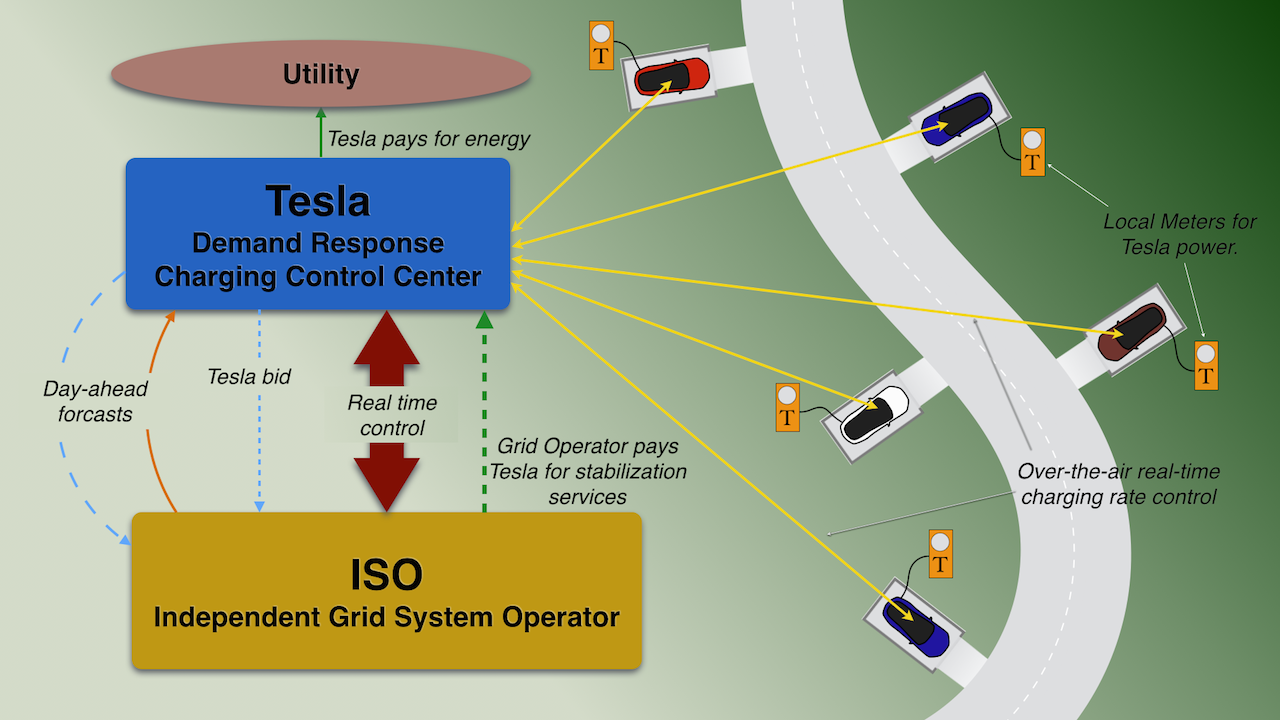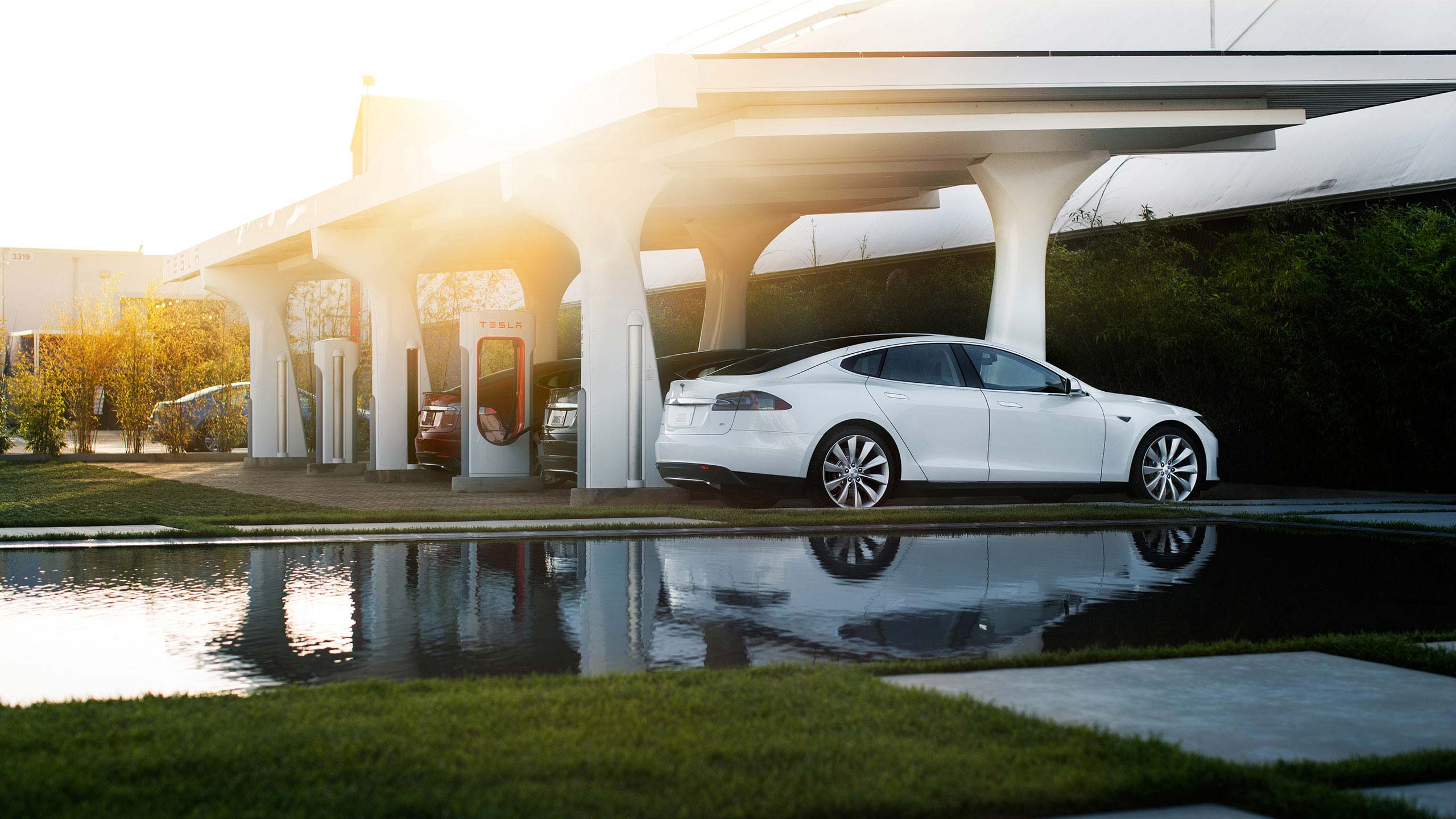

News
Future Teslas Could Come “Energy Included”
Future Teslas could come “energy included”, no matter how much you drive, for the life of the car. Crazy as it sounds, Tesla can actually make money giving Tesla owners free energy at home not just at Superchargers. Key components are already on the road or under development at Tesla. So, how would this work, when will it happen and what does it mean for Tesla owners and Tesla investors?
How it works
Tesla can provide grid regulation and stabilization services worth as much as the energy used for charging, or more, by centrally controlling the time and rate at which Tesla cars are charged. Embedding a modest up-front cost increment into the price of a special Tesla charging connector, pays energy cost in excess of earnings from grid regulation and stabilization as an “annuity”, and can leave a lot of money in Tesla’s pocket, too. This model is similar to Tesla’s Supercharger business – there is a detailed analysis of Tesla’s Supercharger business I did a while back on Seeking Alpha.
Owners will handle charging differently. Instead of setting charging current, normal or range charging, and (optionally) the charging start time, the owner will instead set a time for charging to be completed and whether a normal or range charge is needed by that time. The Tesla charging control center will then match the charging rate of each Tesla car using over-the-air communication links to earn grid regulation fees and capture the best electric rates while making sure each car is recharged when the owner needs to drive off.
Your garage charging connector will be fed from a separate meter and the connector will “identify itself” to the car to enable Tesla controlled charging.
Two things make this scheme economically viable. There is flexibility in exactly when your Tesla charges because most days the charging time is much less than the time your car spends plugged in overnight. This flexibility lets charging be “timed” to help regulate the grid. When wind generation surges due to gusts, or when system load suddenly drops, chargers can be switched on to “swallow” the power surge. The grid system operator, working through the Tesla charging control center can rapidly adjust the charging load to help stabilize the grid.
Rapid adjustment of loads on the grid is valuable because it allows the grid to use more wind power with less fossil generation online as “spinning reserve”. When a large number of car chargers quickly switch on to “swallow” a surge in wind generated power, the value of the “regulation down” can actually be greater than that of the energy used by the chargers. At these times, the system operator will actually pay to have cars charge!
When will free home charging happen?
The answer is, we aren’t there yet. Utilities are only beginning to wrestle with what happens when large amounts of battery storage get connected to the grid. This turns out to be quite complicated. This Sierra Club Energy-Storage Cost-Effectiveness paper offers a summary of the results of several grid storage studies done for the California Independent System Operator (CAISO). At this point we can’t do a specific financial model because technologies, rate structures and even how grid regulation will work with attached storage have not been set.
There are also, at this point, too few Tesla cars on the road to make their charging a significant source of grid regulation. And so far, there is no central control system in place to coordinate the charging of Tesla cars. But times are changing.
CAISO now operates a unified energy imbalance market (EIM) across all or parts of seven states (CA, ID, NV, OR, UT, WA, WY). Within a few years one can imagine upwards of half a million Teslas registered in these states. When these cars are (mostly) plugged in for charging at night, they together represent several giga-watts of load that can be switched on or off in seconds, using the central charging control scheme. That’s a lot of wind regulation capability that requires almost no additional capital investment. It just might get us “free” energy to charge Tesla cars in their owner’s garages.
Status: Where are we on the path to free energy?
Tesla is doing a lot more with grid connected storage and grid regulation than many Tesla owners, and even many Tesla investors realize. In May of this year, J.B. Straubel, Tesla’s Chief Technology Officer made the keynote presentation at Silicon Valley/ SEEDZ Energy Storage Symposium. He discussed a surprising array of Tesla storage products already being made and installed in grid applications, from small residential storage systems being rolled out by SolarCity to large industrial units delivering hundreds of kilowatts. Video of JB’s presentation is available on YouTube here.
A lot of the hardware needed for central charging control of Tesla cars is already part of every Tesla. Every Model S already has a big battery, of course. And high power 10kW or 20kW chargers that are controlled through the touchscreen and the car’s computer. Every Tesla car has a broadband communication link to Tesla company computers that is used to download software updates. These links are available to control charging on a car-by-car basis. Tesla already makes a high power wall connector (HPWC) that can be installed with connection through a standard utility meter. Buying and installing one of these will probably be a requirement to get “free” charging at home.
The only part of the remote charging scheme that isn’t online today is the central control system for “aggregating” car charging so it can be controlled by the grid system operator. Everything else needed to implement aggregated charge control for Tesla cars is either already in production at Tesla or available off the shelf as commercial products or communication services.
In his talk, JB describes aggregation of many residential storage systems to allow the grid operator to use that distributed resource in much the same way aggregated car charging control might be used to stabilize and regulate the grid. At the end of his talk, there is a Q and A session. Someone asks what Tesla’s plans are for eventually implementing the aggregated control center JB described. His answer, “We are building it now.”
Should Tesla owners / investors care about this?
Probably, but some caution is warranted. Tesla owners already talk to their ICE driving friends about how much less electricity costs compared to gasoline or diesel fuel. If in the future all Tesla charging is free, both at home and from Superchargers when traveling long distances, Tesla owners will be left with literally “nothing” to talk about – something their fossil fueled friends may (or may not) appreciate.
For Tesla investors, the prospect of making all the energy for Tesla cars free has some big implications. If the economics parallel those of the Supercharger business, Tesla could see very large additional profit (billions of dollars at least) for something that would require negligible new capital investment by Tesla.
There will be indirect benefits for Tesla, too. Already Tesla cars offer the advantage of much lower energy cost compared to ICE cars, and even hybrids. Free charging at home and at Superchargers would make Tesla cars energy cost even lower than other electric cars which get charged on the owner’s electric meter. While the absolute economic advantage of free charging, compared to other electric cars, will be modest, the emotional value of getting energy for free should never be underestimated as a competitive edge in the market place.
And of course there is the plain, simple novelty of offering a car that costs nothing to run. This is a feature no other car is likely to have, and which no other car (with the exception of soap box derby and solar-car competition cars) has had before. It is newsworthy, people will talk and write about it and it will produce a lot of buzz and free advertising for Tesla. Tesla investors need to be careful not to be overcome with hysteria as the shares go up, yet again.
Disclosure: Author is long Tesla.

Elon Musk
Tesla Full Self-Driving v14.2.1 texting and driving: we tested it
We decided to test it, and our main objective was to try to determine a more definitive label for when it would allow you to grab your phone and look at it without any nudge from the in-car driver monitoring system.
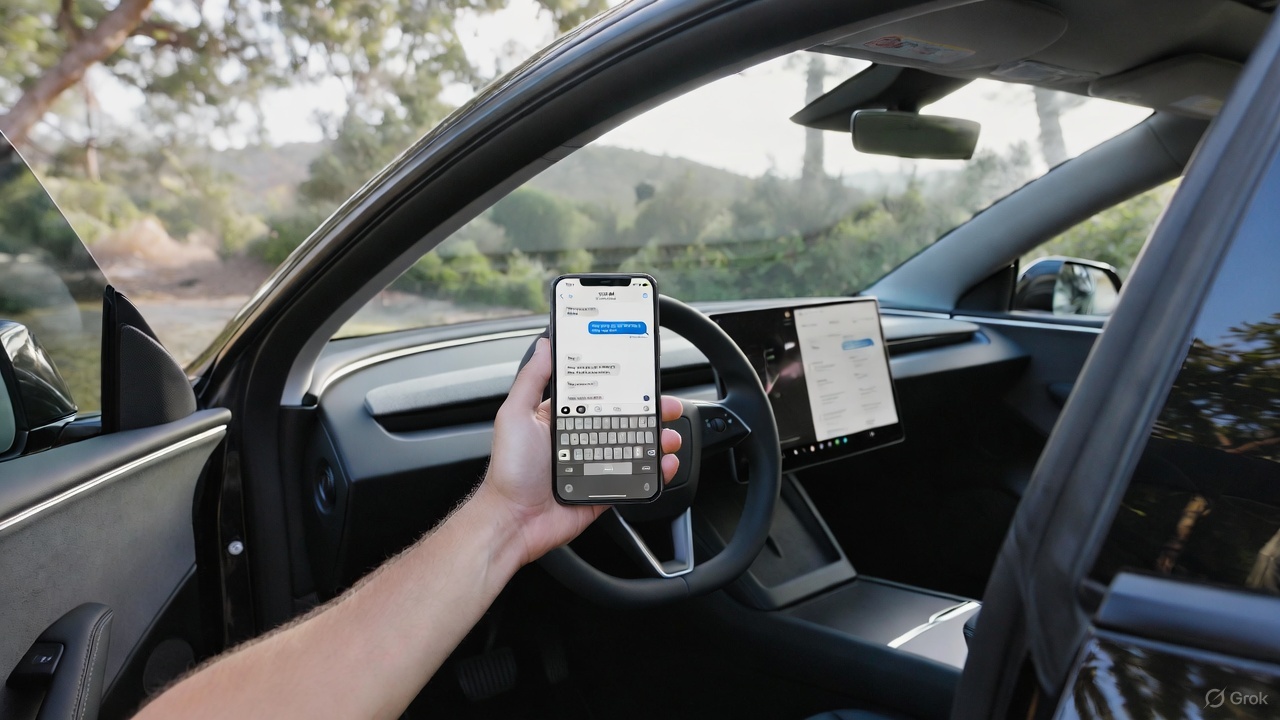
On Thursday, Tesla CEO Elon Musk said that Full Self-Driving v14.2.1 would enable texting and driving “depending on [the] context of surrounding traffic.”
Tesla CEO Elon Musk announces major update with texting and driving on FSD
We decided to test it, and our main objective was to try to determine a more definitive label for when it would allow you to grab your phone and look at it without any nudge from the in-car driver monitoring system.
I’d also like to add that, while Tesla had said back in early November that it hoped to allow this capability within one to two months, I still would not recommend you do it. Even if Tesla or Musk says it will allow you to do so, you should take into account the fact that many laws do not allow you to look at your phone. Be sure to refer to your local regulations surrounding texting and driving, and stay attentive to the road and its surroundings.
The Process
Based on Musk’s post on X, which said the ability to text and drive would be totally dependent on the “context of surrounding traffic,” I decided to try and find three levels of congestion: low, medium, and high.
I also tried as best as I could to always glance up at the road, a natural reaction, but I spent most of my time, during the spans of when it was in my hand, looking at my phone screen. I limited my time looking at the phone screen to a few seconds, five to seven at most. On local roads, I didn’t go over five seconds; once I got to the highway, I ensured the vehicle had no other cars directly in front of me.
Also, at any time I saw a pedestrian, I put my phone down and was fully attentive to the road. I also made sure there were no law enforcement officers around; I am still very aware of the law, which is why I would never do this myself if I were not testing it.
I also limited the testing to no more than one minute per attempt.
I am fully aware that this test might ruffle some feathers. I’m not one to text and drive, and I tried to keep this test as abbreviated as possible while still getting some insight on how often it would require me to look at the road once again.
The Results
Low Congestion Area
I picked a local road close to where I live at a time when I knew there would be very little traffic. I grabbed my phone and looked at it for no more than five seconds before I would glance up at the road to ensure everything was okay:
In full: the Low Congestion Area pic.twitter.com/6DqlBnekPn
— TESLARATI (@Teslarati) December 4, 2025
Looking up at the road was still regular in frequency; I would glance up at the road after hitting that five-second threshold. Then I would look back down.
I had no nudges during this portion of the test. Traffic was far from even a light volume, and other vehicles around were very infrequently seen.
Medium Congestion Area
This area had significantly more traffic and included a stop at a traffic light. I still kept the consecutive time of looking at my phone to about five seconds.
I would quickly glance at the road to ensure everything was okay, then look back down at my phone, spending enough time looking at a post on Instagram, X, or Facebook to determine what it was about, before then peeking at the road again.
There was once again no alert to look at the road, and I started to question whether I was even looking at my phone long enough to get an alert:
In full: the Medium Congestion Area pic.twitter.com/gnhIfBVe6Q
— TESLARATI (@Teslarati) December 4, 2025
Based on past versions of Full Self-Driving, especially dating back to v13, even looking out the window for too long would get me a nudge, and it was about the same amount of time, sometimes more, sometimes less, I would look out of a window to look at a house or a view.
High Congestion Area
I decided to use the highway as a High Congestion Area, and it finally gave me an alert to look at the road.
As strange as it is, I felt more comfortable looking down at my phone for a longer amount of time on the highway, especially considering there is a lower chance of a sudden stop or a dangerous maneuver by another car, especially as I was traveling just 5 MPH over in the left lane.
This is where I finally got an alert from the driver monitoring system, and I immediately put my phone down and returned to looking at the road:
In full: the High Congestion Area pic.twitter.com/K9rIn4ROvm
— TESLARATI (@Teslarati) December 4, 2025
Once I was able to trigger an alert, I considered the testing over with. I think in the future I’d like to try this again with someone else in the car to keep their eyes on the road, but I’m more than aware that we can’t always have company while driving.
My True Thoughts
Although this is apparently enabled based on what was said, I still do not feel totally comfortable with it. I would not ever consider shooting a text or responding to messages because Full Self-Driving is enabled, and there are two reasons for that.
The first is the fact that if an accident were to happen, it would be my fault. Although it would be my fault, people would take it as Tesla’s fault, just based on what media headlines usually are with accidents involving these cars.
Secondly, I am still well aware that it’s against the law to use your phone while driving. In Pennsylvania, we have the Paul Miller Law, which prohibits people from even holding their phones, even at stop lights.
I’d feel much more comfortable using my phone if liability were taken off of me in case of an accident. I trust FSD, but I am still erring on the side of caution, especially considering Tesla’s website still indicates vehicle operators have to remain attentive while using either FSD or Autopilot.
Check out our full test below:
Elon Musk
Tesla CEO Elon Musk announces major update with texting and driving on FSD
“Depending on context of surrounding traffic, yes,” Musk said in regards to FSD v14.2.1 allowing texting and driving.
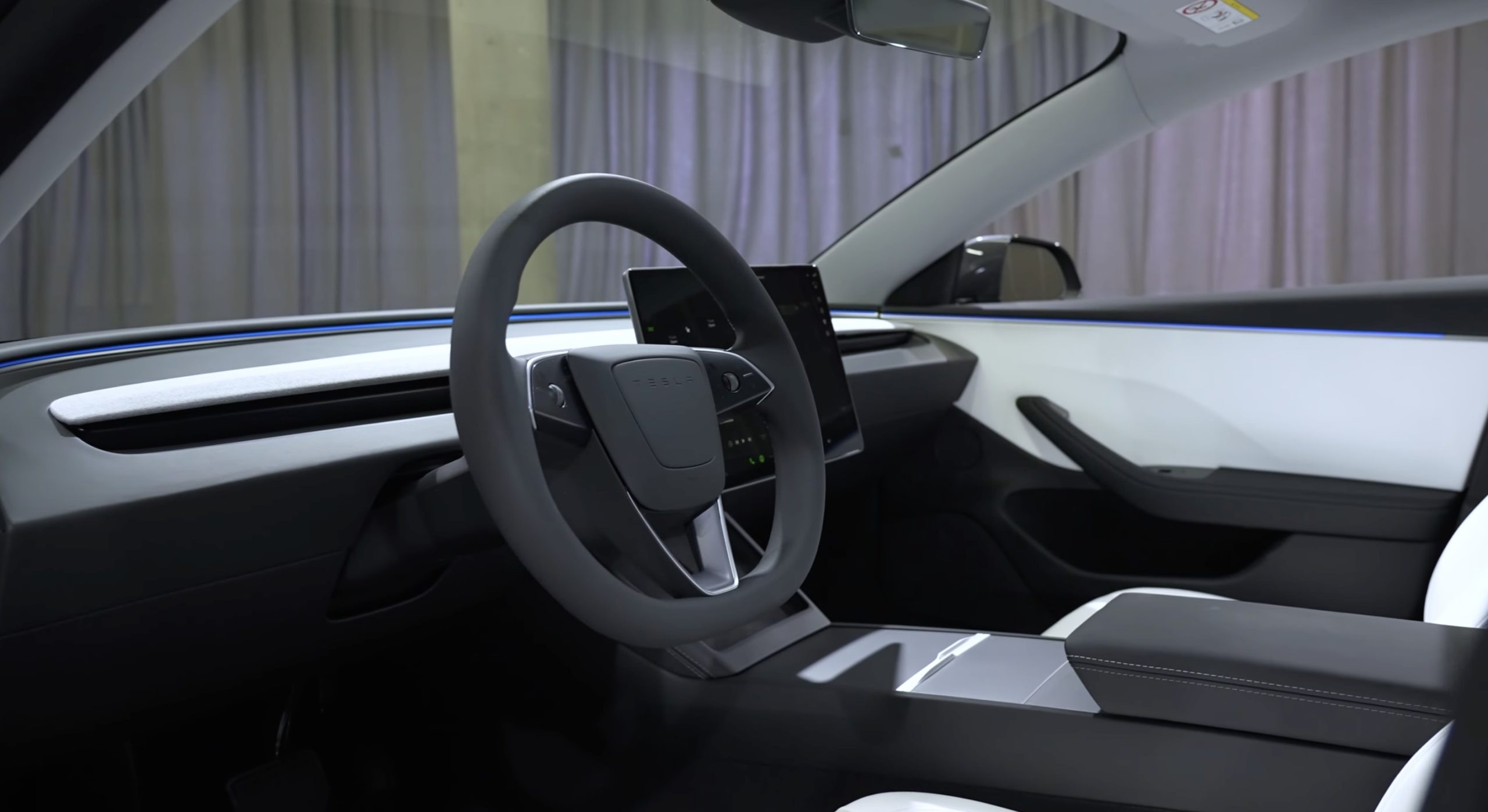
Tesla CEO Elon Musk has announced a major update with texting and driving capabilities on Full Self-Driving v14.2.1, the company’s latest version of the FSD suite.
Tesla Full Self-Driving, even in its most mature and capable versions, is still a Level 2 autonomous driving suite, meaning it requires attention from the vehicle operator.
You cannot sleep, and you should not take attention away from driving; ultimately, you are still solely responsible for what happens with the car.
The vehicles utilize a cabin-facing camera to enable attention monitoring, and if you take your eyes off the road for too long, you will be admonished and advised to pay attention. After five strikes, FSD and Autopilot will be disabled.
However, Musk announced at the Annual Shareholder Meeting in early November that the company would look at the statistics, but it aimed to allow people to text and drive “within the next month or two.”
He said:
“I am confident that, within the next month or two, we’re gonna look at the safety statistics, but we will allow you to text and drive.”
“I am confident that, within the next month or two, we’re gonna look at the safety statistics, but we will allow you to text and drive.”
Does anyone think v14.3 will enable this? pic.twitter.com/N2yn0SK70M
— TESLARATI (@Teslarati) November 23, 2025
Today, Musk confirmed that the current version of Full Self-Driving, which is FSD v14.2.1, does allow for texting and driving “depending on context of surrounding traffic.”
Depending on context of surrounding traffic, yes
— Elon Musk (@elonmusk) December 4, 2025
There are some legitimate questions with this capability, especially as laws in all 50 U.S. states specifically prohibit texting and driving. It will be interesting to see the legality of it, because if a police officer sees you texting, they won’t know that you’re on Full Self-Driving, and you’ll likely be pulled over.
Some states prohibit drivers from even holding a phone when the car is in motion.
It is certainly a move toward unsupervised Full Self-Driving operation, but it is worth noting that Musk’s words state it will only allow the vehicle operator to do it depending on the context of surrounding traffic.
He did not outline any specific conditions that FSD would allow a driver to text and drive.
News
Tesla Semi just got a huge vote of confidence from 300-truck fleet
The confidential meeting marks a major step for the mid-sized carrier in evaluating the electric truck for its regional routes.
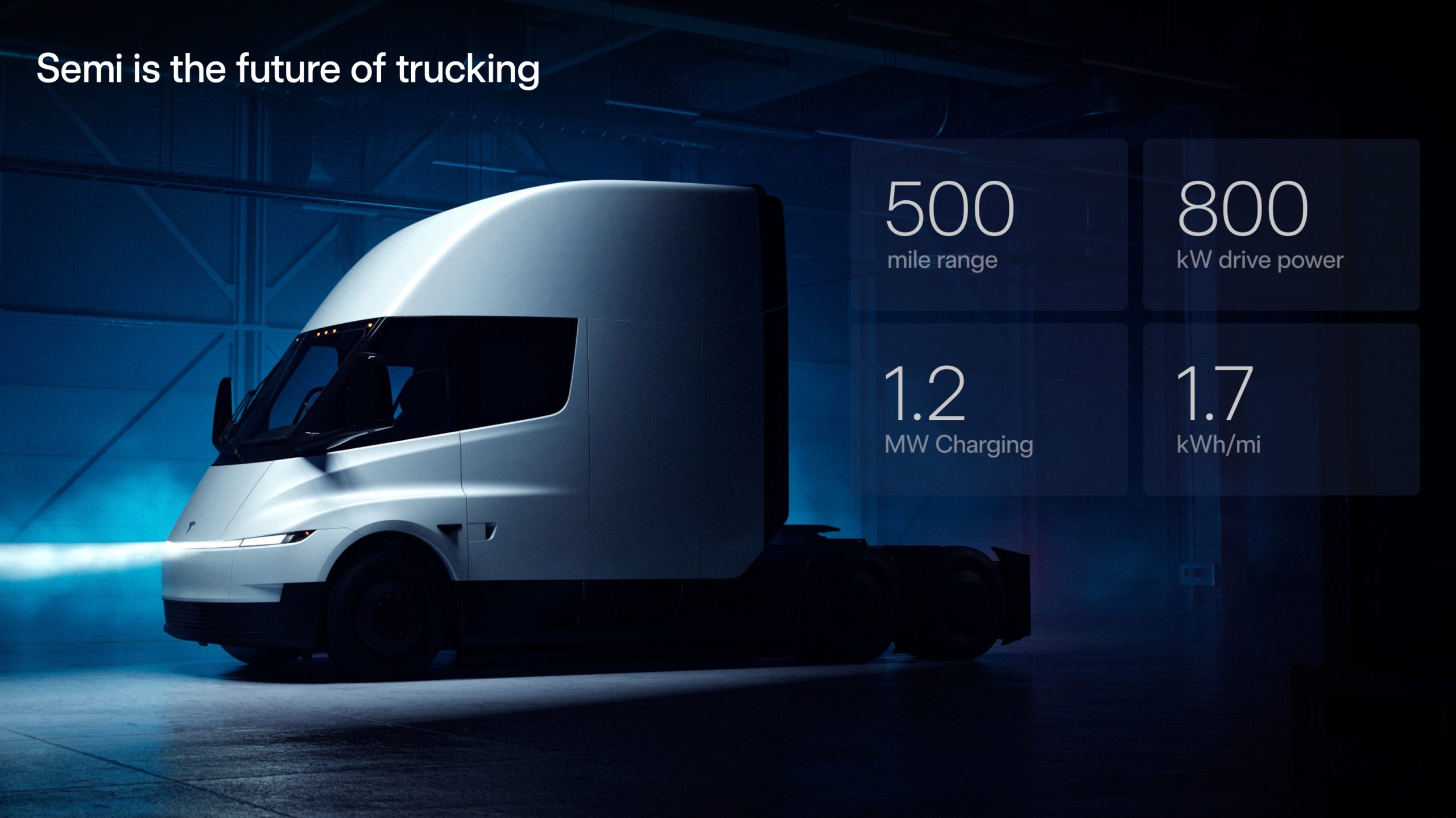
The Tesla Semi is moving closer to broader fleet adoption, with Keller Logistics Group wrapping up a key pre-production planning session with the electric vehicle maker’s team this week.
The confidential meeting marks a major step for the mid-sized carrier in evaluating the electric truck for its regional routes.
Keller’s pre-production Tesla Semi sessions
Keller Logistics Group, a family-owned carrier with over 300 tractors and 1,000 trailers operating in the Midwest and Southeast, completed the session to assess the Tesla Semi’s fit for its operations. The company’s routes typically span 500-600 miles per day, positioning it as an ideal tester for the Semi’s day cab configuration in standard logistics scenarios.
Details remain under mutual NDA, but the meeting reportedly focused on matching the truck to yard, shuttle and regional applications while scrutinizing economics like infrastructure, maintenance and incentives.
What Keller’s executives are saying
CEO Bryan Keller described the approach as methodical. “For us, staying ahead isn’t a headline, it’s a habit. From electrification and yard automation to digital visibility and warehouse technology, our teams are continually pressure-testing what’s next. The Tesla Semi discussion is one more way we evaluate new tools against our standards for safety, uptime, and customer ROI. We don’t chase trends, we pressure-test what works,” Keller said.
Benjamin Pierce, Chief Strategy Officer, echoed these sentiments. “Electrification and next-generation powertrains are part of a much broader transformation. Whether it’s proprietary yard systems like YardLink™, solar and renewable logistics solutions, or real-time vehicle intelligence, Keller’s approach stays the same, test it, prove it, and deploy it only when it strengthens service and total cost for our customers,” Pierce said.
